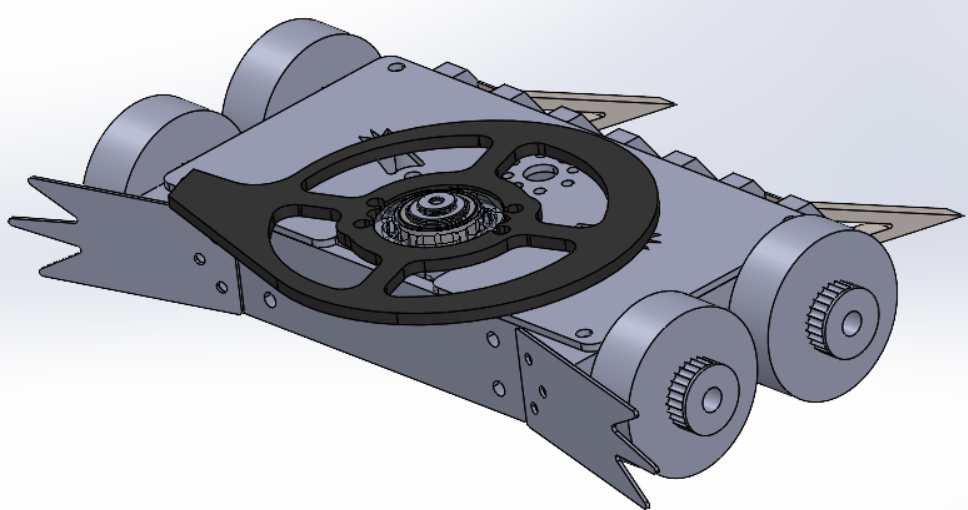| Event | Place | Points |
|---|---|---|
| UCR Presents: Summer Slaughter 2025 | 0 |
Litten is my new antweight design, which I hope to "evolve" into future designs.
The chassis is based on the test chassis from Repeat Robotics; You can find the base chassis on Grabcad by looking for the tangential drive motors. Naturally, the drive uses Repeat's tangential drive motors on lego tires from the Peterbar kit.
The design takes inspiration from British Beetleweight robot "The Chili Daddy"; which is an overcutter with forks on the other end of the bot. While the overcutter is the default configuration, Litten is designed to be flipped upside down while loading in to become an undercutter. This way, it can counter wedges or forks on the fly.
SHOPS I USED FOR THIS BUILD:
1. Repeat Robotics: Every Motor, Motor controller, and wheel of this bot came from this store.
2. SendCutSend: Everything that is purely 2D came from here. Armor panels, plates, and even weapon blades can be made here at excellent prices.
OTHER DETAILS:
Materials: TPU Body, with spring steel top/bottom plates. Spring steel isn't a common material for this application, but it is thin enough to give clearance between the hubmotor and blade. Spring steel is also pretty cheap, which is great for a college-student's budget. Carbon Fiber plates are much better suited for this purpose, but SendCutSend's CF plates are incredibly expensive and time-consuming to ship. If you need CF parts, RSL or CNC Madness would be more ideal.
Weapon: Repeat Ant Hubmotor, with 5.5-inch diameter disk ordered from SCS. I also have a 6-inch bar spinner I bought with my ant hubmotor, which uses a harder AR600. In case the Hubmotor somehow breaks, I can also use a 2822 motor with fingertech hub and blade.
Drive: I use 1406 tangential drive motors from Repeat Robotics. Litten runs on 43.2 Lego Tires used on the back wheels of PeterBar Kits. I have ran a test platform with these motors, and I found them fast, yet easy to drive. I will need to tune down steering speed, and maybe put a minor cap on forward speed if it proves too much.
Battery: 3 Cells. The ideal voltage is difficult to determine, as Litten's drive would prefer lower, more controllable voltages, while the weapon demands a higher voltage to get the best damage out of it. While some builders may use two batteries, weight is a big issue for ants, so one battery would have to do. I plan on using 300mAH capacity. I'm not confident calculating the capacity required, so I wouldn't know how much energy Litten needs until I build it and test it. Litten, like the bot it was based on, has a strong focus on control first, so the lower capacity can be compensated by having the weapon turned down/off for the majority of the match.
Other parts: I ordered 4 AR500 and 2 Titanium forks. AR500 is cheaper and is tougher than Titanium, while Titanium has better strength-to-weight. I ordered both just in case I needed to shave some weight, and to compare the durability of the two materials. For the weapon side, I made two 1.6mm titanium pieces that serve as wheel guards. In addition to protecting wheels, it also helps deflect spinners from slicing through the soft TPU, and the electronics behind it.
